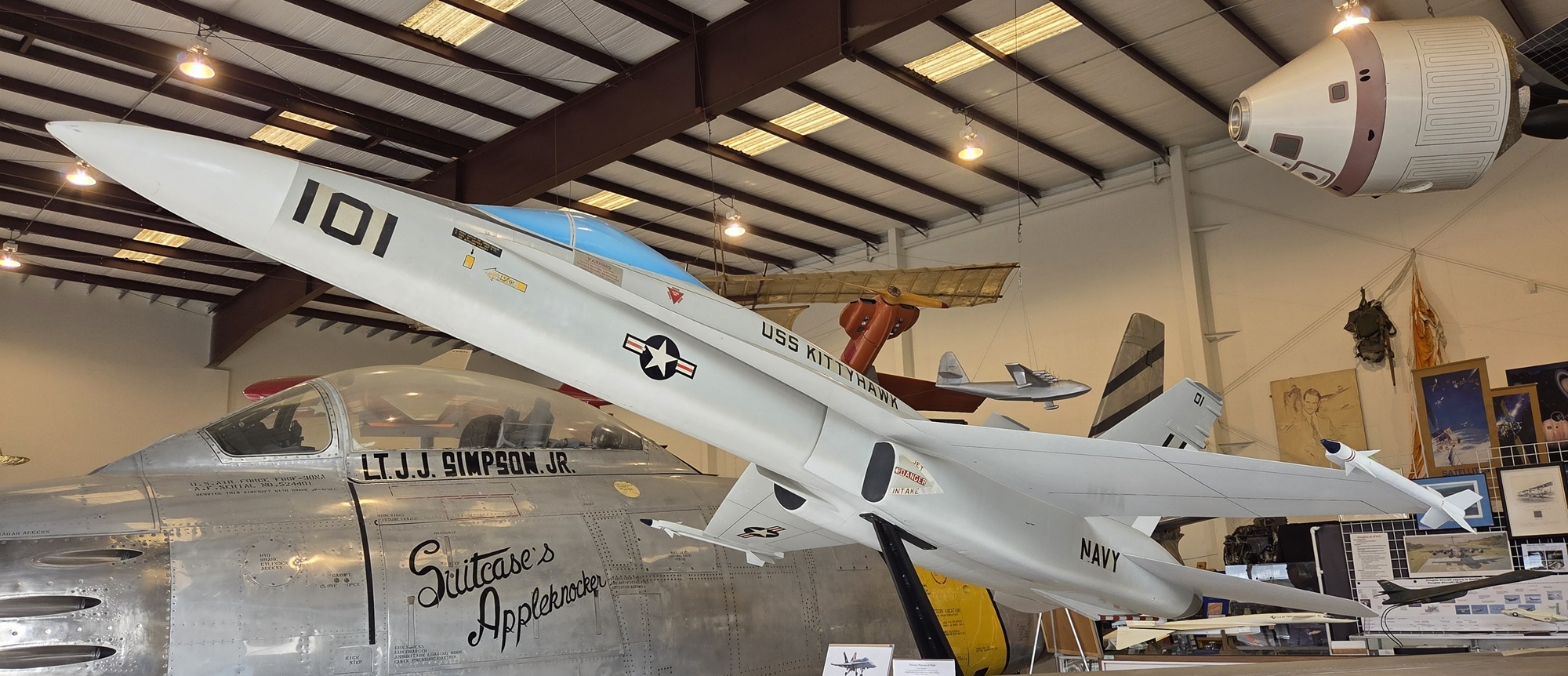F/A-18A One Quarter Scale Model
From YF-17 to F/A-18A
The roots of the F-18 trace back to the early 1970s, when Northrop developed the YF-17 Cobra as part of the US Air Force’s Lightweight Fighter (LWF) competition. Although the YF-17 lost to the General Dynamics YF-16, the Navy saw potential in the twin-engine YF-17 for carrier operations. To adapt the YF-17 for naval use, Northrop partnered with McDonnell Douglas. Northrop brought the airframe expertise, while McDonnell Douglas contributed its experience with carrier-based aircraft.
The result of this collaboration was the F/A-18A Hornet, a single-seat, twin-engine, all-weather, supersonic, carrier-capable multirole fighter and attack aircraft. The F/A-18 was designed to be a highly versatile aircraft due to its avionics, cockpit displays, and excellent aerodynamic characteristics, with the ability to carry a wide variety of weapons. The aircraft can perform fighter escort, fleet air defense, suppression of enemy air defenses, air interdiction, close air support.
It was the first U.S. tactical aircraft designed from the outset to perform both air-to-air and air-to-ground missions – hence the F/A-18 designation.
While retired from active U.S. Navy combat roles in 2019, it is still in service with other countries.
Approximately 380 F/A-18A models were produced.
- First flight: November 18, 1978
- Entered service: 1983 with the U.S. Marine Corps, followed by the Navy in 1984
- Primary contractor: McDonnell Douglas (now Boeing), with Northrop as a major subcontractor
Dimensions:
- Length: 56 feet 1 inch (17.1 meters)
- Wingspan: 40 feet 4 inches (12.3 meters)
- Height: 15 feet 5 inches (4.7 meters)
- Wingspan: 40 ft 4 in (12.3 m) with AIM-9 Sidewinders on wingtip LAU-7 launchers
- Width: 27 ft 7 in (8.4 m) wing folded
- Height: 15 ft 5 in (4.7 m)
- Wing area: 410 sq ft (38 m2)
Performance:
- Maximum Mach: Mach 1.8 (approximately 1,190 mph or 1,915 km/h)
- Maximum speed: 1,190 mph, 1,915 km/h at 40,000 ft (12,000 m)
- Range: 1,089 nm (1,253 sm, 2,017 km) clean with two AIM-9s
- Combat range: 400 nm (460 sm, 740 km) air-to-air mission
- Ferry range: 1,800 nm (2,100 sm, 3,300 km) with three external tanks
- Service ceiling: 50,000 ft (15,000 m)
- Rate of climb: 50,000 ft/min (250 m/s)
- Wing loading: 93 lb/sq ft (450 kg/m2)
- Thrust/weight: 0.96 (1.13 with loaded weight at 50% internal fuel)
- Empty weight: 23,000 lb (10,433 kg)
- Gross weight: 36,970 lb (16,769 kg)
- Max takeoff weight: 51,900 lb (23,541 kg)
- Fuel capacity: 10,860 pounds (4,930 kg) internally
- Powerplant: 2 × General Electric F404-GE-402 afterburning turbofan engines 11,000 lbf (49 kN) thrust each dry, 17,750 lbf (79.0 kn) with afterburner
Variants:
- F/A-18A (Single-seat): The original production model
- F/A-18B (Two-seat): Primarily used for training
- F/A-18C (Single-seat): An upgraded version with improved radar and avionics
- F/A-18D (Two-seat): An upgraded version with improved radar and avionics
- Flown by the Blue Angels from 1987 to 2020 before they transitioned to the F/A-18E Super Hornet






